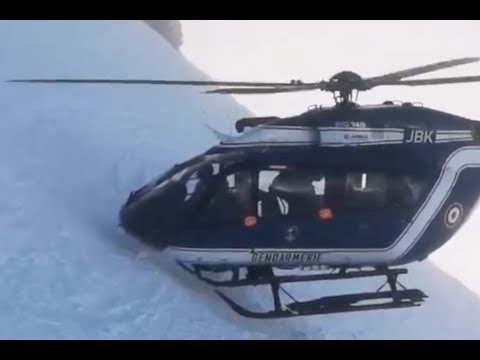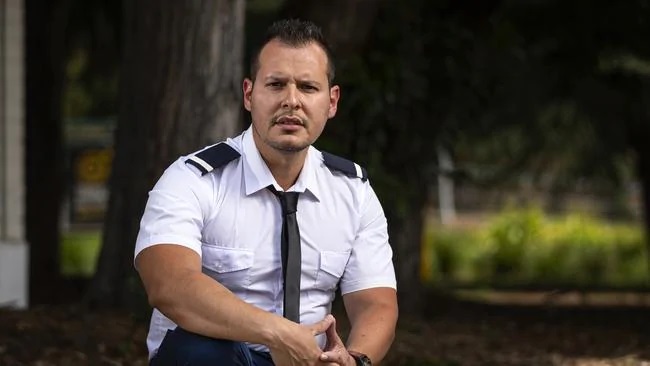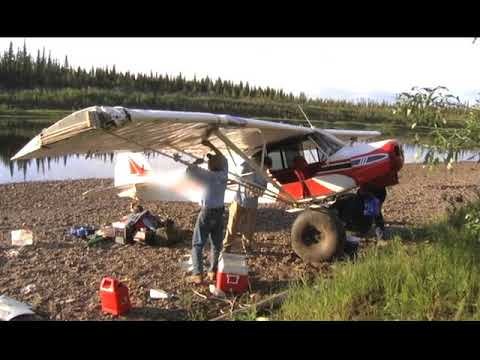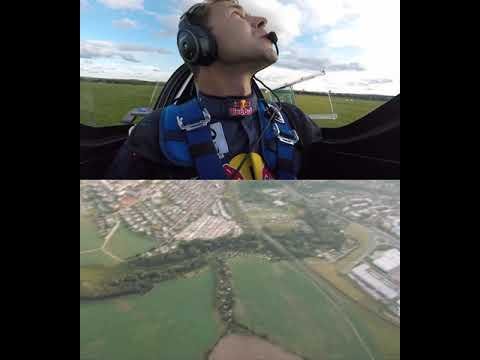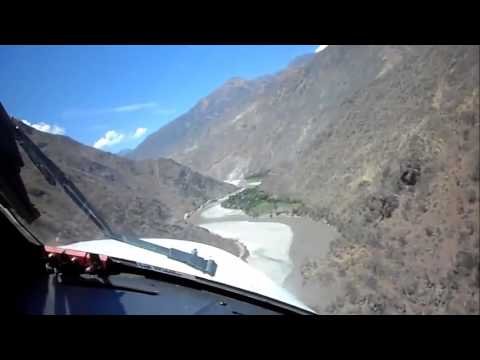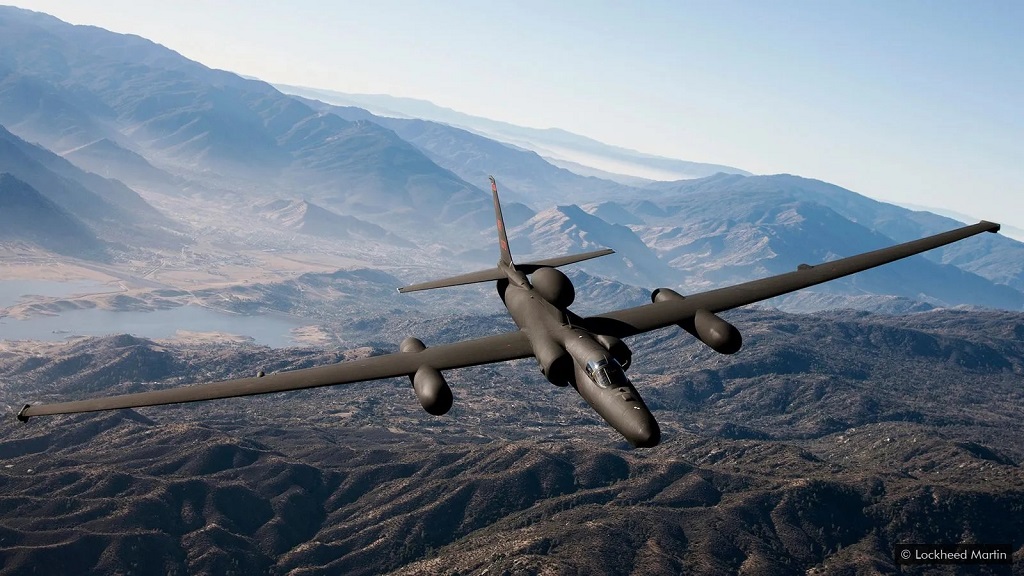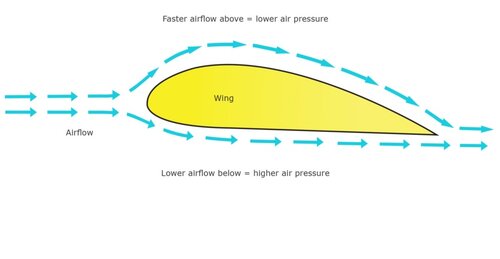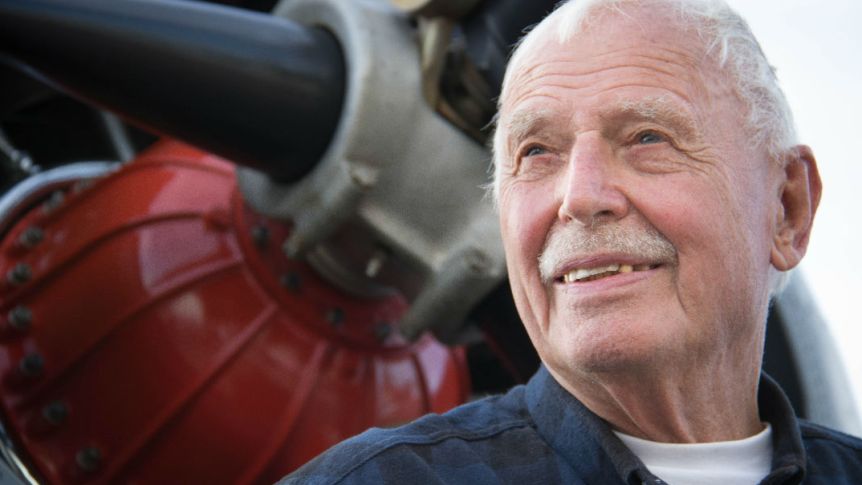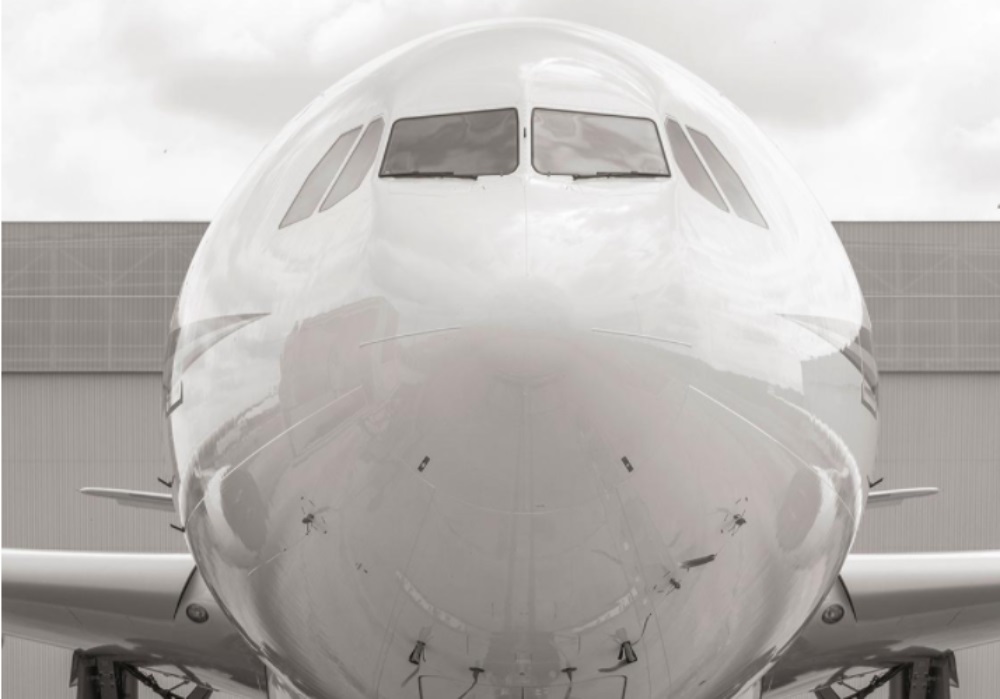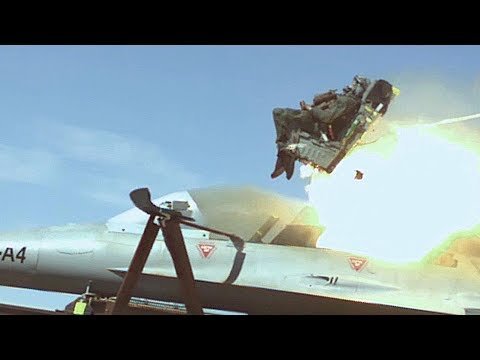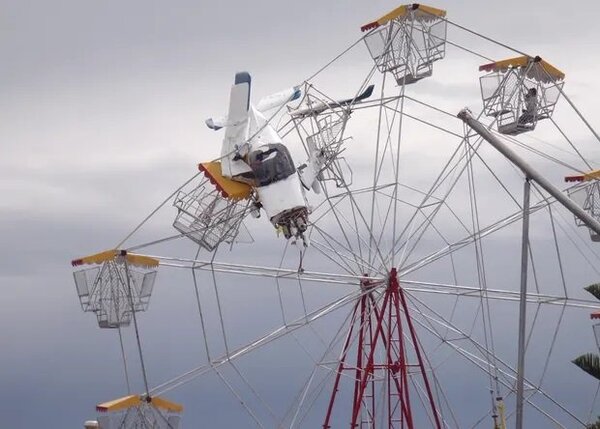-
Posts
9,288 -
Joined
-
Last visited
-
Days Won
108
Content Type
Profiles
Forums
Gallery
Downloads
Blogs
Events
Store
Aircraft
Resources
Tutorials
Articles
Classifieds
Movies
Books
Community Map
Quizzes
Videos Directory
Everything posted by Admin
-

French Gendarmerie Helicopter in Chamonix Rescues Skier
Admin posted a video in Rotary Wing Aircraft
French Gendarmerie helicopter in Chamonix rescues injured skier from snow covered mountain with Eurocopter EC145. Helicopter performs maneuver 'appui patin' to land on the snow covered mountain with blades close to the mountain side to drop off and pick up crew. Pilot has over 5000 hours of flight time. -
Don't forget to add any movies into the site's movie section https://www.recreationalflying.com/movies/
-
Seb Toro came to Australia to make his dream of becoming a pilot come true, but after years of classes with Soar Aviation he has little to show for it other than a $77,000 debt. His aim of getting his commercial pilot’s licence is nowhere nearer, in a similar story for many previous Soar Aviation students. Students have been stranded with Soar Aviation, one of Australia’s biggest flight schools, placed in administration. Mr Toro said he called it quits with the flight school after growing increasingly concerned about safety and teaching standards, after witnessing a dangerous crash that almost claimed the life of a fellow student in 2019. “The crash happened right in front of the window where we were studying,” he said. “It was a really bad situation. A poor pilot student who was in that horrible situation, it was lucky he survived.” The student at the flight school was left trapped after being involved in a serious crash at Moorabbin Airport on December 12 2019, that saw his plane flip and crash. A finding into the crash is yet to be handed down by the Australian Transport Safety Bureau, but it came after another serious crash of a student at Stawell in Victoria in October 2018. The ATSB found the 2018 crash was caused after “contrary to the aircraft’s limitations and the pilot’s qualifications, aerobatic manoeuvres were conducted during the flight, and immediately prior to the loss of control”. “Aerobatic flight should not be undertaken by pilots who have not been adequately trained, as it requires specialist techniques and methods to maintain control of the aircraft during significant manoeuvring,” investigators noted. “This accident clearly demonstrates the catastrophic consequences when the hazards of aerobatic flight are not managed.” More recently, a student and a trainer from the school died in a crash at Carcoar, south of Orange in the central west of NSW, in November in an attempt at a touch-and-go landing. Mr Toro said he was concerned about the instructors at Soar Aviation who were “very new to the industry”. “I still remember having one instructor from New Zealand, he got lost when we went for a flight,” he said. “I was a student and I ended up guiding the situation.” Mr Toro said the issues at Soar Aviation extended to its planes. “Some students had technical issues, one had a door open mid-flight,” he said. “They got planes that were for sporting. The planes were not designed for training purposes. Soar Aviation has 56 planes, but put up seven for sale in 2020 seeking to cover $500,000 in losses. Figures in the flight teaching industry said many of the planes used by Soar Aviation were considerably cheaper to operate than the Cessna 172 Mr Toro said the students saw advertised. Soar Aviation’s business model was built around providing part-time pilot training to students through its education partners in Sydney and Melbourne. Students were covered by VET-fee help for up to 200 hours of flight time, but anything extra was out of pocket for students. Its deal with the Box Hill Institute at one stage saw it teaching hundreds of students, but by the time it shut near the end of 2020 it had been whittled down to just 126 students. This is fewer than the almost 200 students currently members of a class action headed by Gordon Legal, alleging that the flight school did not meet CASA requirements, and delivered substandard teaching. Mr Toro said he was concerned that Soar Aviation kept trying to keep students flying despite them failing to progress to licences. “My problems started with getting massive overrunning hours without seeing a light to get my licence,” he said. “Management was pushing its instructors to push people to fly no matter the weather. “The extra repetitions that was the big concern for us, if you run out of your 200 hours the extra hours were out of pocket.” Mr Toro said he signed up to Soar Aviation because the offer to study part-time meant he was able to continue working. He was quickly concerned about the “very poor student support” and how few people were able to progress to a commercial pilot licence. “The internal exams were so easy to pass, but the ones that really mattered were the ones by the Civil Aviation Safety Authority,” he said. “The majority of students failed to comply with CASA regulations because of the poor quality theory training.” Mr Toro said he and fellow students had brought up issues with Soar’s former CEO, Neel Khokhani, and its education partner, the Box Hill Institute. “I had a very stressful meeting with the Dean of aviation. He said you can drop the course and nothing more happens,” Mr Toro said. Mr Toro said Mr Khokhani was mostly absent during his time at Soar Aviation, speaking to his class once. Mr Khokhani declined to comment.
-
-
-

nice light suitable personal logbook, suggestions ?
Admin replied to RFguy's topic in Student Pilot & Further Learning
We have one either black or Pink and is lightweight but comprehensive here in the site shop https://www.clearprop.com.au/for-pilots/other-pilot-supplies/pilot-log-book-black-or-pink/ -
-
Social Australia is locked to Australian users only and with the software license now expired I turned that function off. I will have to monitor how it goes
-
Seems to be working ok for me...anyone else having a problem?
-
Merry Christmas to every single aviator our there, have a great time with family and friends, a fantastic New Year, and PLEASE stay safe!
-
Satellites – and drones – were intended to replace it. But the 65-year-old Lockheed U-2 is still at the top of its game, flying missions in an environment no other aircraft can operate in. Nearly twice as wide as it is long, the Lockheed U-2 spy plane is one of the most distinctive aircraft in the United States Air Force – and the hardest aircraft to fly, earning itself the nickname “The Dragon Lady”. The U-2’s 63ft-long (19m) thin fuselage, two high-aspect, un-swept glider-like wings, and powerful engine are designed to rocket the plane higher than 70,000ft (21km) – and, crucially, keep it there. The U-2 operates at such height and at such a wafer-thin margin between its maximum speed and its stall speed that pilots call its cruising altitude “coffin corner”. The missions there last hours at a time. The aircraft’s slender design is sometimes difficult to see. Often, it is covered in pods, spiky antennae, mysterious bulges and nosecones hiding the sensors, radar, cameras and communications equipment it needs to complete its missions. These different sensors can be plugged into the plane almost as if someone was building a model kit. There is an urban myth that one such bulge or pod contains a cloaking device – an electronic signal that renders it invisible to radar. At 70,000ft and above, the “Dragon Lady” still has the stratosphere largely to itself, just as it did 65 years ago on its first flight. At these altitudes, the pilot is more astronaut than aviator. In the cocoon-like, pressurised cockpit of the U-2, wrapped in a bulky pressure suit with a large spherical helmet, the pilot breathes 100% oxygen. Some of the features of this kit can still be found on spacesuits in use today. In air this thin the margins between living and dying are narrow. Indeed, the pilot faces the constant danger of hypoxia (lack of oxygen) and altitude-induced decompression sickness. Like any plane, the U-2 has to fly fast enough that the plane doesn’t stall and not so fast that the plane breaks up – the challenge for the U-2 pilot is that at 70,000ft there may be only a few miles an hour difference. An accidental nudge on the controls could spell disaster. Close to the ground the plane’s mechanical controls, easy to manipulate at high altitude, now take muscle power. The U-2’s lightweight design makes the plane liable to float over runways, bounce back into the air if the landing is too hard and very sensitive to cross winds. The weight-saving bicycle-style landing gear makes it difficult – and hard work – to keep the plane in a straight line and its wings level as it slows down. The visibility from the cockpit is so limited that when landing the pilot has to rely on instructions from another U-2 pilot driving a car that races on to the runway when the plane is coming into land. These chase cars have reached speeds close to 140mph (224km/h). The U-2 was designed to snoop over Soviet territory in order to keep tabs on the USSR's military “The U-2 really attracts the kind of pilots who want to say ‘I fly the most difficult aeroplane in the inventory’,” says Greg Birdsall, Lockheed Martin’s U-2 deputy programme manager. “They take a pilot candidate and put him in a trainer aircraft with a seasoned instructor pilot in the backseat to see how they take to the peculiar handling characteristics of the aeroplane.” Only around 10–15% of pilots who apply to join the programme are accepted. In the age of automation and algorithms it is easy to imagine that these spy planes and their pilots with the “right stuff” are a relic from the Cold War – but that would be wrong. For the 31 years since the fall of the Berlin Wall, the U-2 has been intercepting speech or text, acquiring electronic signals, taking photographs and using a special form of radar to capture digital imagery. The U-2 has also acquired new roles, like that of a data relay. Its ability to fly high in the sky meant that it was in the perfect position to relay information from the battlefield to headquarters. In the process it has outlasted rival planes and seen off the surveillance satellites that were supposed to make it redundant. Now the 31 operational U-2s in the USAF fleet are about to undergo a $50m (£37.8m) update and acquire a new mission which could see them fly on for another 30 more years. It may also see them go head-to-head with a drone so secret that its existence has yet to be officially acknowledged. “We are not going away as a programme and we are investing heavily to bring the U-2 into its new mission environment,” says Lockheed Martin U-2 programme director Irene Helley. “In this new era there is no sunset date planned.” Although no relic, the U-2 is certainly synonymous with the Cold War. In the 1950s, President Dwight D Eisenhower’s administration received several shocks over the Soviet Union’s nuclear capabilities. This was due to its intelligence gap. The Soviet Union was a closed society that was difficult for the Central Intelligence Agency (CIA) to penetrate. The lack of spies in the right places meant that the president needed a high-altitude spy plane to tell him exactly what the Soviet Union was up to. And he needed it quickly. Landing a U-2 comes with some very special challenges In engineering genius Kelly Johnson and his team at the secretive “Skunk Works”, Lockheed had exactly the people to create it for him. The mythology of the “Skunk Works” was born when Johnson and his engineers designed and built the airframe of USAF’s first jet in just 143 days back in 1943. In late 1954, they set to work on this secretive spyplane. The plane had to sustain flight above 70,000ft, have a 3,000-mile (4,800km) range and carry 700lb (212kg) of equipment. The U-2 flew for the first time only eight months later, on 1 August 1955, in a remote location in Nevada now known as Area 51. It was clear that Johnson and his team had come up with something special. “The U-2 marks the start of a shift towards technical intelligence that is solving these intelligence problems not by John le Carré-style spies on the ground, but through advanced technology,” says Peter J Westwick, director of the Aerospace History Project at the Huntington-USC Institute on California and the West. He also wrote Stealth: The Secret Contest to Invent Invisible Aircraft and says, “the U-2 is really kind of the first big technological jump into technical intelligence”. The U-2’s story could have been very different. In 1966 its future looked bleak; only 15 of the original 55 U-2s built were still in operation. Crucially, the decision was made to restart production in the 1980s, a tricky business when many of the original engineers had retired. The planes that flew off the rebuilt production lines certainly looked similar to the original, but they were nearly 40% bigger and had a new modular design in order to carry more – and heavier – equipment, and switch it more easily for different kinds of missions. The U-2s in operation today can carry nearly three times as much twice as far and fly for three times as long as the original aircraft. In the 1990s they were substantially updated again; that upgrading process continues to this day. The U-2 has so far seen off at least five possible replacements. The first, in the 1970s, was from the first-generation UAVs (unmanned aerial vehicles). The whale-like Northrup Grumman RQ-4 Global Hawk, a high-altitude remotely piloted surveillance aircraft, is one of the most recent. When it first appeared in 1998 the U-2 was more than 40 years old. To pay for the U-2’s update, 24 Global Hawks are going to have to be scrapped. With the Global Hawk sidelined, the evolution of the U-2 can take its next step. The changes to the plane will include better avionics, a touchscreen cockpit (that you can use with a pressure suit) and a new mission computer that will allow the plane to run the new Open Mission System (OMS). A bit like a spyplane equivalent of the Android system you might find on your mobile phone, OMS will enable aircraft like the U-2 to talk easily to the computer systems of tanks, ships, aircraft, satellites and even cyberweapons. The U-2's design - a slim body and long wings - help keep it aloft in the thin air of the upper atmosphere “That the U-2 can serve for another 30 years is really down to the genius of the folks who designed the plane,” says Helley. “When we started rolling off new versions of the plane it was built to have an excess amount of power and space – and the modular way it was redesigned… allows us to continually upgrade it or equip it to serve different types of missions. “We can take something from concept to a demonstration flight and then testing in the field within weeks or months.” The U-2’s experience has been a benefit. “It has a proven high-altitude performance,” Helley says. “There is also the recognition that its airframes are still basically teenagers. They have about 80% of their design service life left.” Manned platforms are also much better at dealing with surprises than computers. “If you look at space and some of the other types of surveillance capabilities, they depend on a great deal of pre-planning to provide the information required. In contrast, the U-2 is always available and can be ready at a moment’s notice.” “What I am often asked is, why can’t satellites do what the U-2 does?” says Chris Pocock, a former aviation journalist and the author of books about the U-2. “Well, they have fantastic capabilities now, but a predictable orbital path. This means that low-orbit spy satellites aren’t over any one area for very long, whereas the U-2 can loiter for a long time over one specific spot.” Satellites are also increasingly vulnerable to countermeasures such as lasers that can blind spy satellites, jamming or even missiles that can damage or destroy a vital satellite. The U-2 helped to pioneer the use of a data link to relay intelligence to ground stations which might be thousands of miles away, bouncing the signal first to a satellite above it. Now this role will become more important with the USAF’s ambition for all its computers, irrespective of which company made them, to be able to talk to each other. New sensors or cameras are to be added and removed from the plane quicker and cheaply than ever before and compared to it its rivals. The U-2 does have one problem: it’s not particularly stealthy. And that means it cannot fly over the airspace of other countries without their knowledge. A U-2 was recently spotted by Chinese military flying over their military exercises in South China Sea. It now appears that US defence contractor Northrup Grumman has now built a small fleet of top-secret drones that look like its B-2 bomber to do precisely this. Some believe it could replace the U-2. The Boeing X-37B spaceplane could one day launch tiny satellites which could perform some of the U-2's missions These yet-to-be de-classified high-altitude, long-endurance reconnaissance drones popularly called the RQ-180 must have cloaking devices as only the odd “possible” photograph has ever surfaced, an astonishing feat in the digital age. While a cloaking device is a fictional piece of stealth technology that allows planes or spacecraft to become invisible, the top-secret drone is known for its unusual light colour that makes it hard to spot. This has earned it the nickname “Great White Bat”, or more whimsically “Shikaka”, a fictional sacred white bat from the film Ace Venture 2. “Whatever I say must be considered provisional,” says Pocock. “It must be very stealthy if it’s going to go into denied territory and do what the U-2 does over friendly territory, but I don’t think it will replace the U-2 because it’s apparently fantastically expensive, they are not making many [as few as seven] and there may be not many occasions when they can get permission to fly.” Micro-satellites pose a greater threat to the future of the U-2. Weighing between 10 to 100kg (22 to 220lb) they are small enough to be launched from spaceplanes such as the Boeing X-37. “These micro satellites can be launched from a single rocket launch in such large numbers that they begin to overcome the vulnerabilities of spy satellites in low Earth orbit,” says Pocock. “If you have got 10 or more satellites going around the Earth in chains then you’re are revisiting the same place on Earth in hours not days.” Yet Helley is confident that the U-2 will see off the threats from future rivals as well as it did the earlier ones. “What else serves in the environment that the U-2 does?” she says. “We see the U-2 as a North Star in a very large constellation of real-time information gathering and dissemination.” “It is a hard, hard environment to operate in,” adds Birdsall. “Trying to develop something to take its place, or even to complement it at that altitude, wouldn’t be quick, wouldn’t be easy, and would be very costly. When you’ve already got the capability that we’ve got, why do it?”
-
Ok, @Ahmed Zayed is getting better so he has adjusted the listing of the leaders in the Quizzes to only show the top 3. I will also allocate more time per quiz...unfortunately once a quiz starts I can't change the allocated time. Hope this is ok?
-
What about if it just showed the top 3
-
I see that 5 have taken the first quiz, i would very much like to know how you found the new quiz section. There are some things that I can change with it like: Display x number of users that got the top results Display CORRECT ANSWERS on your Quiz results Allow users to play the quiz only once or many times (top results show only a user's first attempt or their highest attempt) etc So please let me know how you found the new quiz section and anything you think I need to change...thanks
-
In line with the objectives of this site: Increase pilot safety by increasing their knowledge of flying Increase pilot skills by the exchange of experiences through discussion In crease pilots knowledge in proper aircraft maintenance I have implemented a Quiz section to the site. Now this is just experimental at this stage with just 1 quiz being created. Subject to your feedback I may change some of the parameters of the quiz section before I add many more quizzes that I have ready to add to this new section so please, take the first quiz and let me know your feedback. Remember the quizzes are purely a learning tool in the hope they help and that THEY ARE FUN You can find them under "Resources" in the main menu Enjoy!
-
-
One of the world's rarest planes has made its final flight, touching down in a western Victorian town that fundraised for two years to bring it home. The Australian-made Wirraway was used to train pilots at the Nhill airbase during World War II. At its peak, there were as many Royal Australian Air Force personnel at the airbase as the population of Nhill. Today the population of Nhill, which is halfway between Melbourne and Adelaide, is about the same at just 2,000. The plane is made up of parts from countless discarded Wirraways, and is among the best preserved in the world. Aircraft engineer Borg Sorensen spent 10 years scouring the country for the parts, and another eight putting the pieces back together. He found his first Wirraway in Horsham, an hour from Nhill, hacked apart with an axe and spread over five paddocks. The Wirraway is welcomed by a large crowd at the Nhill Aerodrome.(ABC TV) Community funding brings plane home On Saturday Mr Sorensen flew the historic aircraft for the last time, from Frankston to the Nhill Aerodrome. "It was the first production-built aeroplane in Australia," Mr Sorensen said. "I wanted it preserved. I built it to preserve a Wirraway because there are not many left." The Wirraway was used to train Royal Australian Air Force pilots at the Nhill airbase during World War II.(Supplied: Nhill Aviation Heritage Centre) The community met its $300,000 fundraising target just hours before the plane touched down. Nhill Aviation Heritage Centre president Rob Lynch said the support for the project had been unprecedented. The project is entirely community funded. Weeks out from the landing an anonymous donation of $15,000 was received. It is hoped having the aircraft at the base will help commemorate the men who trained at Nhill and died at war. Construction underway at the Royal Australian Air Force Base at Nhill in 1941.(Supplied: Nhill Aviation Heritage Centre) Mr Sorensen could have sold his Wirraway for almost twice as much on the international market, but he knew it belonged at Nhill. "We'd been flying it for 16 years, my son and I, and we started going round doing airshows and then all of a sudden I thought 'That's really not what I built it for'," he said. "My reason for building it was to preserve it and when they put it to me, would I consider selling it, I thought 'Yes, that will just suit me fine'." Max Carland flew Wirraways during his training in the air force.(ABC Western Vic: Jessica Black) 'Amazing to see the thing still working' Max Carland flew fighter planes in New Guinea in World War II and came of fighting age with the Nhill airbase on his doorstep. "Most of the people at Nhill joined the air force because there was an air force stationed here," he said. "Having flown the Wirraway during my training days, it's amazing to see the thing still working." But the Wirraway was not without its faults. "Another thing it used to do that we didn't like very much was it used to, on starting, sometimes the engine would catch alight, so every time we started a Wirraway engine, we had to have a big fire extinguisher." Merv Schneider was a radio navigator and trained at the Nhill airbase before he was old enough to serve. "Our fighter pilots were Wirraway-trained. Being built in Australia, the opportunity of one coming home to Nhill really brings home the significance of the Wirraway."
-
@Ahmed Zayed who helps with the development of this site and strongly note how much great work Ahmed has done for us all here, is currently quarantined in his home in Egypt without his family and doing it tough with positive Covid-19. Not sure how he caught it, Ahmed is a high level technician at a world renowned electronics company and Egypt doesn't have the strict work and social constraints that we have had here, especially here in Victoria so like any of us, it can be caught simply by standing in line for a coffee. I personally, and I am sure everyone here wishes Ahmed a speedy recovery and happy times once again with his family when he comes out of this hard time...get well Ahmed, stay strong and remember you will come through this
- 1 reply
-
- 14
-

-

-
Pitot tubes are crucial components onboard aircraft used to measure a range of important data. The tubes are popularly known as speedometers, giving pilots a gauge on their airspeed, and also measure altitude and altitude trend. Pitot tubes are usually found along the front fuselage or along the wing of an aircraft. What exactly are pitot tubes? Pitot tubes aren’t just inventions innovated for aviation; they’re also commonly found in industrial machinery, boats and even Formula 1 cars. A pitot tube is essentially a flow sensor instrument. Simple pitot tubes have one hole at the front; however, planes will often use pitot-static tubes with two openings rather than separate pitot tubes and static ports. Pitot-static instrumentation on an aircraft. Photo: Getty Images A simple pitot tube can measure stagnation pressure only due to its single opening. The advantage of a pitot-static tube is its ability to measure static pressure in addition to stagnation pressure. Static ports along the side of the pitot tube give it this all-in-one capability, meaning there is no need to install separate static ports elsewhere. How pitot tubes work Pitot tubes work as flow sensors to measure the speed and pressure of air, liquid or gas. These readings allow pilots to gauge airspeed and altitude and have a wide variety of applications in other equipment. The tubes can usually be spotted beneath the cockpit on the front fuselage or along the wing. Pitot tubes clearly visible on a 737NG. Photo: Simple Flying/Dylan Ashe The pitot-static tube has two openings, one in the front and one along the sides, used to measure air, gas or liquid flow. This system involves placing a pitot tube inside another tube with static ports. The front hole measures the stagnation pressure, while the side openings (static ports) gauge static pressure. The difference between these two measurements is called dynamic pressure – this is what is used to calculate airspeed. Pitot tubes are critical instruments Measuring airspeed is an indispensable part of flying and essential for all pilots to keep a gauge of. Pitot tubes provide indicated airspeed (IAS), based upon measuring the dynamic pressure. This is different from groundspeed, as planes can encounter resistance during flight, such as headwind and air density. Pitot tubes provide pilots with vital data on airspeed and altitude. Photo: Getty Images Planes flying too slowly won’t generate enough lift and risk spiraling into a stall, while aircraft flying too quickly risk damage as they aren’t built to withstand certain speeds. Airspeed is also vital in estimating flight length – inaccurate estimations may cause pilots to run out of fuel mid-journey if the flight goes on longer than expected. Incidents involving pitot tubes As a critical part of an aircraft’s instrumentation, pitot tubes have been at the center of several accidents. As the tubes are exposed to the elements, they are in danger of icing over, which has led to several fatal accidents. Pitot tube failures will always force a plane to divert – in October, an Airbus flight over Russia was forced to land after its pitot tubes were not heating up adequately. Testing the pitot-static system is important for ensuring safety. Photo: Lufthansa In one case, wasps nested inside a pitot tube, which later led to a fatal crash onboard Birgenair Flight 301. The aircraft had been grounded for 20 days and its pitot tubes were left uncovered, allowing wasps to burrow inside. Australia is to this day combating nuisance wasps that are nesting inside pitot tubes. Another high-profile case involved a disgruntled American Airlines mechanic tampering with a pitot tube, which led to an emergency landing.
-
Yes, there could be separate What's New pages however there would be a slight performance hit in that the SQL Query that pulls the data up from the database for each one would have to include specific forum criteria (forum list filter)
-
The Off Topic site Social Australia is used to direct off topic discussions away from this site Recreational Flying however I have to make a choice between 3 options in the next few days and need you to advise on what you want. The Off Topic site uses the same software as this site, that is IPS and in the next few days the software license will expire. Now the site is just used as a secondary site, produces no income and simply costs. To renew the IPS license will cost around $400USD a year. This option will keep it looking and working like this site. I could go to the Xenforo software at only $200USD per year but whilst it would be cheaper, it would look and work differently than this site. The last option would be to bring the Off Topic back into this site. The cost is nil but it would be hard to completely segregate the Off Topic threads and posts from the aviation ones. So please vote on what you would like to have.
-
An ejection seat is a system used to rescue the pilot of an airplane in an emergency. Usually, the seat is propelled from the plane by explosives or rockets. Once off the plane, the ejection seat's descend is controlled by using a parachute. Here is a video showing an ejection seat test mission conducted by the USAF. There are very few missions requiring years of planning and preparation, only to be accomplished in less than six seconds. There are even fewer facilities where such a mission can take place. The Holloman High Speed Test Track (HHSTT) is a facility that enables test scientists and engineers to meet both of the above criteria. Tests on the track provide data on problems that cannot be solved by other ground test means. The tests are conducted by securing the ejection seat to a rocket-propelled sled and launching the sled to a speed identical to that of which a pilot will encounter in an actual flight.
-
It’s no secret that aviation is one of the biggest contributors to the planet’s carbon deposits. If left unchecked, research shows that aircrafts will have generated over 43 metric gigatons of carbon emissions by 2050. The same study notes that aviation is also one of the fastest-growing sources of carbon in the US. In order to create a more sustainable industry, local aeronautics specialists are doubling their efforts to make flight more eco-friendly. One solution they found, of course, was to switch planes’ fuel motors with electrically charged ones. For years, the venture seemed fruitless—but NASA is proving that nothing is impossible. The X-57 Maxwell is NASA’s first fully electric experimental aircraft. It was first released as a concept last year, but the government agency is conducting its first tests this month. Powered by two 400-pound lithium-ion battery packs, the X-57 Maxwell skilfully addresses the biggest hurdle faced by electric-powered aircraft: weight. Innovative propeller technology An aircraft is very heavy, which is why it takes a lot of energy to keep it in the sky. Yet, on the flip side, the majority of a plane’s weight is the machinery that powers the aircraft. Due to an increase in accessibility of “light yet reliable” high-lift motors and motor controllers, NASA has been able to solve the weight issue. Electronic manufacturers were able to calculate their PCBs’ stackup impedance to ensure enough signal layers in every power path. As a result, all the machine’s components get enough electricity between the ground and power planes, enabling each motor to work with minimal sag or droop. On each of X-57 Maxwell’s wings, six of those electric-powered motors are built-in for each propeller, theoretically allowing the plane to fly. An ultra-light aircraft NASA didn’t actually build the X-57 Maxwell’s body. The base used was a Tecnam P2006T—an aircraft built by Costruzioni Aeronautiche Tecnam from Italy. This plane continues to be the lightest twin-engine aircraft available, which made it the best starting point for NASA’s aircraft. Furthermore, the X-57 Maxwell’s wings are at least 58% smaller than regular wings. NASA claims that not only will this reduce the overall weight, but also lower the drag. This will prevent the aircraft from expending too much power. Where is the X-57 Maxwell now? NASA recently completed the plane’s Low-Speed Aeroacoustic Wind Tunnel (LSAWT) in Hampton, Virginia. They exposed the hardware to wind speeds from zero to over 90 knots for 14 hours. The results were very positive. The LSAWT test took over two weeks during October. “The X-57 project is using these tests to determine the as-built performance versus our models, so that we have high confidence in the performance of these propellers when we get to flight,” mentions Nick Borer, Advanced Concepts Group Lead for NASA Langley’s Aeronautics Systems Analysis Branch. Once the X-57 Maxwell successfully takes off, it’s going to be proof that zero-emission air travel is possible. NASA just needs to perform a couple of other tests and we’ll hopefully see the aircraft in the sky in the near future. Indeed, the future is bright for sustainable aviation.
-
A PILOT was “shaken up” after his light aircraft suffered engine failure and was forced to crash land soon after take-off at Tyabb airfield. The Searey amphibious single-engine plane was reported to have landed on the emergency east-west runway where it collided with a parked twin-engine Cessna 414, 10.30am, Wednesday 25 November. Peninsula Aero Club president Jack Vevers said the plane was in the air for about eight seconds after reaching a height of “maybe 50 feet”. The pilot was taken to Frankston Hospital with a sore back and for a general assessment. An Australian Transport Safety Bureau spokesman said the bureau would not be conducting a safety investigation into the incident as “doing so would be unlikely to uncover new safety issues or learnings”. Mr Vevers said the PAC would be conducting its own inquiry. He estimated the damage bill to be around $20,000.
-

Negligence vs Insurance where does this leave us
Admin replied to graham brown's topic in AUS/NZ General Discussion
Amber Christine Arndell was just 13 when a light plane crashed into the ferris wheel set up next to an airstrip on the mid-north coast The light plane that crashed into a ferris wheel at a fair at Old Bar Beach near Taree in 2011. Amber Christine Arndell, who was on the ride, has been awarded her $1.5m in damages. Photograph: Frank Palfreyman/AAP A young woman who was on a ferris wheel when it was struck by a light plane has been awarded $1.5m in damages by a New South Wales court which heard she was “unemployable” almost 10 years after the traumatic event. Amber Christine Arndell, then 13, and her brother were riding the 20 metre-high amusement at the annual Old Bar Beach festival near Taree in October 2011 when a two-seat light plane took off at an adjacent airstrip. The aircraft attempted a landing before taking off again, veering left into the ferris wheel. The NSW supreme court this week found MidCoast Council and pilot Paul Clarendon Cox negligent for breaching their care to the woman. “[Arndell’s] evidence makes clear she was frightened the ferris wheel was going to collapse and/or the fuel from the plane would ignite – and that she and her brother would die,” Justice Stephen Rothman said this week. Cox was ordered to cover 35% of the $1.5m in damages. He failed in his lawsuit against the council despite the court accepting the pilot had suffered insomnia, flashbacks and other mental harm due to the crash. His landing attempt that turned into touch-and-go “displayed a lack of due care and diligence”, the judge said. The court heard a council officer had examined the ferris wheel after it was erected and raised no issues with its placement. That was despite it intruding into the splay – a three-dimensional area meant to remain clear to allow aircraft to land and take off. Two medical experts agreed Arndell’s experience of the collision was traumatic and had significant effects but were split on whether the trauma had been resolved and what effect earlier, traumatic events had on her recognised psychiatric illness. The court heard the woman had ridden on another ferris wheel after the crash. She testified that occurred under pressure from her grandparents to face her problems and she was shaking and in tears during it. Arndell was unable to attend fairgrounds and ride on a ferris wheel again until 2017 when accompanied by her partner. The judge concluded she had a pre-existing psychological vulnerability, went through a period of decompensation and developed a generalised anxiety disorder and a major depressive disorder. “The overwhelming cause of the plaintiff’s incapacity is the trauma associated with the collision,” he said. Her school reports had spoken of a hard-working and confident student until late 2011 and it wasn’t unreasonable to expect that Arndell would have completed high school and worked in the fashion industry, the judge said. The collision had made that an “impossible task” and – while not fully restricting her enjoyment of life outside work – it was “clear that for all practical purposes the plaintiff is unemployable,” the judge said. Arndell, now 23, was awarded slightly under $1.1m for lost wages. Her non-economic loss was deemed to be worthy of a $412,200 payment. Source: https://www.theguardian.com/australia-news/2020/dec/02/woman-awarded-15m-in-damages-after-ferris-wheel-struck-by-plane-in-nsw


